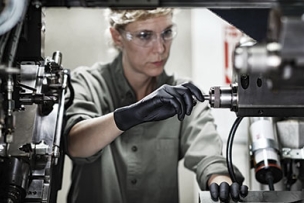MCR Safety has over forty years of experience as a leader in the field of personal protective equipment (PPE). Our assortment of offerings includes gloves, glasses, and garments which are made from the highest quality materials available to ensure maximum safety, comfort, and style.
Concrete laborers take on challenging projects involving significant amounts of risk. Working conditions range from cement burns to crush hazards, both major concerns for employers concerned with protecting their employees.
MCR Safety is committed to understanding all concrete-related risks and developing the best hand protection available for the concrete industry. To help highlight this commitment, a concrete-dedicated page has been created, educating laborers on the most common concrete hazards and their product solutions.
One of the hazards covered are crush hazards. Beyond what is covered below, be sure to check out MCR Safety's Impact Protection page covering all back-of-hand protection hazards a worker might face.








Talk to Us!
Leave a reply
Your email address will not be published. Required fields are marked *